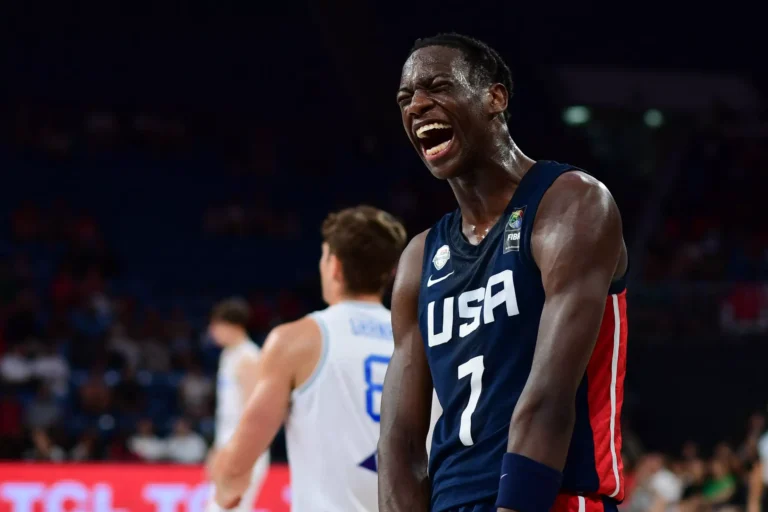When the Carolina Panthers made the shocking decision to bench quarterback Bryce Young back in September, the reverberations were felt across the NFL. This move raised eyebrows and sparked discussions about the franchise’s commitment to the first overall pick, especially considering it came after just 18 games in his professional career. Was this a sign that the Panthers were ready to give up on Young?
The decision to bench Young was based on three key considerations: the need to restore his confidence, the inadequate talent surrounding him, and the desire to establish a winning culture under first-year head coach Brian Callahan. The Panthers felt that Young wasn’t capable of elevating his team or even maintaining their performance levels. As a result, Callahan announced the decision to start a different quarterback, leading to an initial win before the team spiraled into a five-game losing streak.
Fast forward to Tuesday, news broke about another quarterback saga unfolding in the league: the Indianapolis Colts had decided to bench Anthony Richardson, the fourth overall pick in the 2023 NFL Draft. Although one could draw parallels between the two situations, the circumstances surrounding Richardson’s benching are quite different from Young’s.
Where Young’s 5-foot-10, 204-pound frame raised questions about his effectiveness at the NFL level, Richardson’s 6-foot-4, 244-pound physique attracted considerable attention from talent evaluators. Young’s college experience—27 starts and 949 attempts—provided a clear glimpse of his potential, whereas Richardson had only 13 starts and 393 attempts, leading to a more speculative assessment of his abilities.
In Indianapolis, the context is different. Colts head coach Shane Steichen arrived in the organization last year after guiding an NFC championship offense in Philadelphia. Under his leadership, the Colts managed a surprise winning record (9-8) in 2023, despite Richardson suffering a season-ending shoulder injury after just four starts.
As it stands, the Panthers (1-7) have less than a 1% chance of making the playoffs, according to the New York Times’ playoff predictor. In contrast, the Colts, with a 4-4 record, still have a 30% chance of securing a playoff spot. The reality of NFL dynamics often dictates that short-term strategies may not align with long-term development for young quarterbacks.
So, let’s explore the Colts’ decision to bench Richardson, a player who arguably needs more experience, and the potential risks that come with this choice.
The Colts’ Shift in Strategy
Since Andrew Luck’s retirement in 2019, the Colts have been in search of a stable quarterback solution. After experimenting with various quarterbacks, including Philip Rivers, Carson Wentz, and Matt Ryan, the franchise aimed to find a long-term answer. Enter Anthony Richardson—a high-risk, high-reward prospect whose athleticism and play-making abilities captured the Colts’ interest. The team was ready to endure the growing pains of his development.
General manager Chris Ballard had previously expressed his belief in Richardson’s potential, highlighting the challenges he would face due to his limited college experience. Fast forward to now, and after 10 games over the past two seasons, Richardson’s performance has been a mixed bag. He has completed just 50.2% of his passes, with seven touchdowns and eight interceptions, while also contributing 378 rushing yards and five rushing touchdowns.
Despite flashes of brilliance, Richardson’s performance has been inconsistent, as evidenced by his 57.2 passer rating, placing him last among quarterbacks with at least 100 attempts this season. In contrast, Joe Flacco, whom the Colts are now elevating as the starting quarterback, boasts an impressive 102.2 passer rating.
The Colts’ decision to start Flacco indicates a focus on short-term gains, especially with challenging games against the Minnesota Vikings, Buffalo Bills, New York Jets, and Detroit Lions on the horizon. This pivot reflects a pressing need for Ballard to secure his position in a league where job security is constantly under scrutiny. With playoff aspirations in mind, the Colts are hoping that Flacco can replicate the success he found as a backup for the Cleveland Browns last season.
The Impact on Richardson
However, the implications of this decision on Richardson’s development are significant. He expressed confidence in his abilities, stating he can run and pass better than most quarterbacks in the league. Still, Ballard’s recent actions suggest a departure from his earlier commitment to allow Richardson the time he needs to grow.
The Colts’ coaching staff had previously emphasized the importance of patience with young quarterbacks, recognizing the inevitable ups and downs. Yet, after the loss to the Texans, Steichen’s endorsement of Richardson appeared to weaken. He started discussing “ongoing conversations” about the quarterback’s role, hinting at a more fluid approach to his development.
Steichen acknowledged the dual nature of a quarterback’s development: some players thrive when thrown into the fire, while others benefit from sitting back and observing. For Richardson, this might be an opportunity to learn from the sidelines, but it raises questions about the potential long-term effects on his confidence and growth.
In a telling moment during the Texans game, Richardson chose to take himself out of play because he felt fatigued. This decision sparked criticism from coaches and executives, leading to concerns about how his teammates perceive him as a leader. Center Ryan Kelly addressed the situation, emphasizing that Richardson must meet the high standards expected of a quarterback in the NFL.






